Techniques
One of the most basic and pervasive principles of WAYK is the use of techniques. Techniques, or TQs for short, are a collection of strategies used to shave seconds off of language learning interactions. WAYK players use TQs in myriad ways: to control the flow of information, modify the learning environment, decrease risk, anxiety, and distraction, increase comfort, speed, and enjoyment, and, perhaps most importantly, train learners to be teachers.
Some WAYK TQs are adaptations of established pedagogical practices, while others are tactics that we’ve discovered while working with languages in the field. By using simple signs or phrases to express these complex ideas, there is no need for either the learner or the speaker to take time away from the language to explain what they need. Moreover, using signs allows players to communicate these needs quickly and quietly across a busy room and even in large crowds. When a whole community is using these strategies as often as possible, collectively they can save a massive amount of time creating fluent speakers and teachers.
“Throwing a TQ” means making a gesture that is associated with a specific request or suggestion. Players throw TQs to evoke a predetermined response or change in each other or the environment. With established TQs and recognizable gestures, a player only needs to throw the TQ (make the gesture) and the entire group can wordlessly and seamlessly make specific adjustments. Like playing an action card in a board game or calling a rule on the playground, the sign allows for instantaneous communication of a larger concept, in our case a pedagogical one. The only prerequisite is an understanding within a group of WAYK players that everyone will acknowledge and abide by the TQs and work together to carry out the requested changes.
There is an important distinction between the signs associated with TQs and the use of sign language in general. WAYK encourages players to use sign language (American Sign Language, Signed Exact English, or another sign language appropriate to your spoken language/region) as a bridge language and a memory tool. We recommend connecting signs with vocabulary words or grammatical structures and using the signs and speech simultaneously. However, the signs that you use in this way are NOT techniques, rather this is the perfect application of just one technique, Sign Language. TQs, on the other hand, precipitate a particular response or change in the activity or environment. Using sign language increases comprehension, but throwing a TQ makes something happen!
You may notice that some techniques have similar hand signs and some don’t have a sign. As with all languages, some concepts can’t be expressed in a single sign. However, the system is designed so that most of the techniques that you’ll need to maintain an immersion setting have a distinct hand sign to go with them. If no sign exists for a TQ that you wish to use, simply make the general Technique sign and say the name of the TQ. (Alternatively, you can use the sign for Technique as a signal anytime you need to take a time out from an activity to discuss strategies.) One more comment about hand signs: as you may notice from our pictures, either hand can be used for making the signs.
Please note, new techniques are being developed all of the time, and while we try to keep our glossary as complete as possible, not all of the newest TQs may be published yet. As you become more proficient in WAYK and more familiar with WAYK TQs, sign language, and pedagogy, you may notice that you are coining signs and strategies that aren’t already on this list. If you do create a TQ, make sure to submit it to WAYK at info@whereareyourkeys.org. We’ll test your TQ with our players, check for redundancy, refine it if necessary and publish your TQ (with credit to you) if it checks out!
| TQ: 50/50 |  |
This Technique comes from Justin Slocum Bailey’s strategy for classroom preparation when he was starting out as a Latin teacher: he spent 50% of his prep time actually designing lessons and 50% improving his own proficiency or teaching skills. This ratio is important for anyone who is still learning the language while teaching it. Improving your own proficiency is a better investment of time than making the lesson for tomorrow one degree more perfect. As your language proficiency increases, so will the quality of your lessons, your materials, and your sessions with learners. |
| TQ: a few of my favorite things | 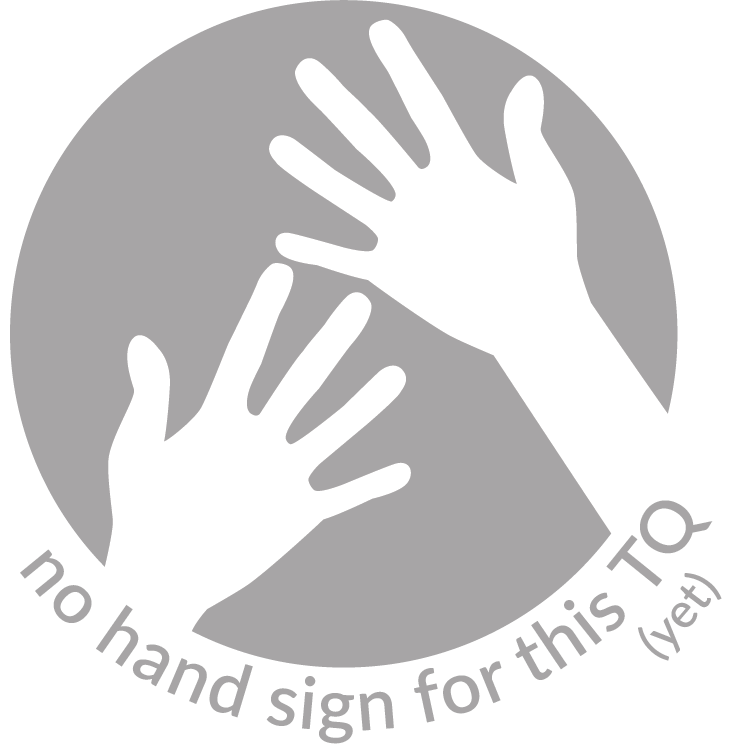 |
Use this TQ to collect information about the likes and interests of people you talk with. You might feel like a spy, but it’s for the language! If you know someone’s favorite activities, places, people, or pets, you’ll always have something to talk to them about in the language. Is your fluent speaker a sports fan? Ask them about their favorite team each time you see them: “When was the last time you went to a game?” You can build these topics into Same Conversations and build your fluency quickly while talking about things they love to talk about. |
| TQ: accent |  |
This TQ is thrown to indicate that a language might have variations in pronunciation or other differences (vocabulary, grammar, etc.) that come from regional diversity or dialects. Often a second hand sign can be Contracted to clarify the source of differing words or pronunciations (e.g. northern/southern, eastern/western, upriver/downriver/river mouth, etc.). Throwing this TQ acknowledges that there is more than one acceptable Accent (poTAYto and poTAHto are both understandable, just different accents), and allows the conversation to move forward without getting bogged down in a debate over who’s right. |
| TQ: accent adjustment |  |
Although we definitely encourage Mumble to start, once you’ve got some practice under your belt, someone might offer you an Accent Adjustment to help you correct your pronunciation. You can also ask for an Accent Adjustment, if you’re not sure of how something is pronounced. |
| TQ: again |  |
Use this TQ to request something that just happened be repeated without any change or variation. This can be a word, phrase or sentence that you want to hear again, an action that you want to see again, or a repeat of a conversation that you participated in. |
| TQ: agreement |  |
If your group creates a new technique, name it, give it a sign, and make an Agreement to use it to save time in the future, should the situation arise again. See also: Contract. |
| TQ: anchors |  |
“Be anchors, not bookends!” Use Anchors when you have a few experienced speakers or WAYK players with a group of novices. Make sure that your experienced players are evenly dispersed among the novices, and not bunched together or clustered around the leader. |
| TQ: angel on your shoulder |  |
You don’t have to fumble through answers on your own! Angels hover on the edge of a conversation and sign and speak along with you. You are encouraged to use their prompts if you need them. It’s not cheating, it’s learning! |
| TQ: angels, point to who you’re helping |  |
When you’re leading a Lotus with a large Lunatic Fringe, be ready to call “Angels, Point To Who You’re Helping! Give your players a thumbs up, a wink, and a nod!” at the beginning of each round. This will make it super clear to the Inner Circle who they can depend on for help. Be ready to follow this up with “Inner Circle, Point To Your Angels!” and, if there’s any confusion, with Angel Boss and Pick Sides. |
| TQ: baby bird |  |
An anti-TQ: Don’t let this happen to you! It’s possible to create a Baby Bird when you feed too many translations to a novice learner. You could wind up with a learner that struggles to turn off their English Brain and trust the game. As a result, they might constantly request translations to check their understanding, which Pops the immersion Bubble. Similarly, if you don’t have a clear expectation that new learners will teach, you can accidentally create a needy community that only consumes language and never gives back. Therefore, have crystal clear expectations for WAYK beginners: there will be minimal translation and you will be teaching! Create Lead Sled Dogs, not Baby Birds! |
| TQ: backwards buildup |  |
This TQ comes from the Rassias Method. When dealing with a difficult word or phrase, start to Copycat from the last syllable or “breath group” and then keep adding the previous syllable until everyone is copying the entire word or phrase. For example: She sells seashells would be, “Shells… seashells…sells seashells…she sells seashells.” It works because our brains have a harder time holding on to the ends of long words or sentences than the beginnings! Learners can ask for a Backwards Buildup at any time! |
| TQ: basketball team |  |
People often ask “How big does our teaching team need to be before we launch an immersion house?” The best case scenario is to wait until you have a full Basketball Team’s worth of language speakers/teachers before you launch a language program for the community. This means not just five for the court, but a full bench of five relief players. It may take several years of diligent effort and investment to achieve this full time language team of ten, but until that number is reached, the program is at risk of running out of players. Even if you need to start a program before your roster is full, keep the ten deep Basketball Team as your goal. |
| TQ: be here now |  |
Language is more vibrant if it’s based on real experience. So instead of trying to create a Set Up by saying something like, “Imagine you’re in a café in Spain…” see if you can use your real world surroundings to tease out the same piece of language. Stick with conversations that are about things that you can see, touch, hear, taste, and experience around you, right here and right now. |
| TQ: beans in a box |  |
Choose the right-sized space for your event. 100 people in your apartment is going to be too crowded. Conversely, ten people in the Colosseum feels weird; there’s too much opportunity for people to hide in the corners. It’s like two beans in a big, huge box. |
| TQ: billion penny millionaire |  |
Essentially a rationale for using TQs. If you collect a billion pennies, you you’re still a millionaire even though you gathered wealth in very small increments. If you can shave seconds off of conversations about how to learn language and add seconds on to conversations in the language, then you can save hours, weeks, or even years on getting a community fluent in a language. |
| TQ: birds of a feather |  |
If you’re playing with a larger group, this TQ ensures that nobody gets lost in the crowd. If one person throws a TQ, but the speaker/leader doesn’t see it, everyone who does see it should throw the same TQ until it gets acknowledged. Don’t leave anyone hanging! This counts double for How Fascinating!!! |
| TQ: bite-sized piece | 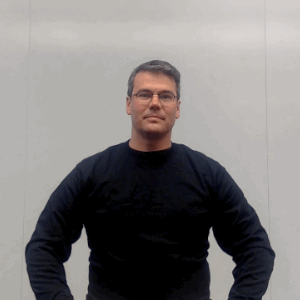 |
Don’t bite off more than you can chew! Language learning works best when you’re building on a foundation of language you’re comfortable using. It’s best to Limit new language to one manageable morsel. Leaders throw Bite-Sized Piece to find out if players are ready to move on. Whenever learners know they’re ready, they can use this sign to jump to the next bite. |
| TQ: black hole vortex |  |
If someone leaves the Inner Circle during a Lotus, and the seat doesn’t get immediately filled, use Black Hole Vortex to encourage someone from the Lunatic Fringe to jump in. While everyone makes a loud and ridiculous sucking sound, shake your hands over the empty seat (the “black hole” vacuum that will suck everyone into outer space if left vacant) and don’t forget to plug the black hole with a noise when someone sits down! Pah! |
| TQ: blow the bubble |  |
Use Blow the Bubble to establish your Immersion Bubble. Take a deep breath and blow up an enormous invisible balloon that will envelop your whole group. You can do this at the beginning of a session or after you’ve Popped the Bubble to have a quick English chat about your hunt or lesson. This is a good time to start your Stopwatch if you’re tracking your time in immersion! Blow the Bubble is a good signal to your group that you’re about to clock some time in your target language. |
| TQ: break it down |  |
Break It Down was originally developed as a reading TQ. When someone asks for you to Break It Down, they are asking for clarification about the language pieces that make up a word or phrase. To help someone who’s stuck, you might break the word down into its parts: the root, then any prefixes, infixes, suffixes or other parts that make up the whole. Use Sign Language and Set Ups to demonstrate what is going on inside the word, all without translating! |
| TQ: bridge language |  |
WAYK uses Sign Language as a Bridge Language or intermediary language between two spoken languages. Not only does it help to associate gestures with words (a proven memory aid!), you’re also learning sign language along the way. WAYK players who are familiar with sign language can also use it to communicate without interrupting their spoken immersion conversation. |
| TQ: bruce lee |  |
In language, a Bruce Lee is usually a Superior or Distinguished level speaker, often a native speaker, and a real heavy hitter. We recommend sitting next to a Bruce Lee because you can learn a ton, but don’t worry about understanding everything since a lot of what he says will be a Sorry Charlie. Good techniques when you’re around a Bruce Lee are Let It Go, Mr. Miyagi’s Chopsticks, Code Talker, and Eager Idiot. |
| TQ: bruce lee sandwich |  |
Make yourself the filling in a Bruce Lee Sandwich by finding two superior speakers (Bruce Lees) and grabbing a seat right between them (or as close as you can get!). This can be a great strategy if you are able to Let It Go, since a lot of what Bruce Lees say to each other might be over your head. Manage your Full level and make the Bruce Lee Sandwich work for you. Also, see what you can do to make your Bruce Lees comfortable: get them coffee or snacks so they can keep their awesome language kung fu going. But, caution: when you wind up in a Bruce Lee Sandwich unintentionally, you can get Full super fast if you forget your TQs! Remember your training, Grasshopper. |
| TQ: cat’s out of the bag |  |
When leading a game, set players up to ask you a question that you already know the answer to or that starts a dialogue. First, have players Copycat the question three times. Then, signal Cat’s Out of the Bag to prompt them to ask you the question they just practiced. Use Cat’s Out of the Bag to avoid asking someone a question they can’t answer. |
| TQ: clean cup, move down |  |
You can’t run a Bucket Brigade with a limited amount of space (like one table in a restaurant) but you can still play through several Buckets by using Clean Cup, Move Down. Instead of having players move to another table to start a new lesson, simply call “Clean Cup, Move Down” (like at the Mad Hatter’s Tea Party) and all of the players will stand up and rotate one seat. Not only does the rotation give learners a clear sense of each Bite-Sized Piece, but everyone gets a mini Break between lessons! |
| TQ: clear the battlefield |  |
Keep the playing surface clear of all distractions (papers, water bottles, etc.), except for the props the players need for the specific conversation they are having. If the surface becomes cluttered, “Clear the Battlefield!” |
| TQ: code talker |  |
Maybe you’re in a situation (like a Bruce Lee Sandwich) where most of the conversation is a Sorry, Charlie. Cover your mouth with one hand and create a sound pathway to you your ear with your other hand. Copycat everything you hear into your own ear, loudly enough that you are actually speaking but softly enough so that no one else can hear you. Don’t worry about understanding what you’re saying, just Let It Go! Code Talker isn’t about comprehension. It’s about picking up the cadence, rhythm, and song of the language. |
| TQ: coffee talk |  |
A Coffee Talk (or Tea Talk) is a task-based language activity that is easy to develop as a Same Conversation in your target language. During a Coffee Talk learners will take turns following detailed instructions to make a cup of coffee (tea, cocoa, etc.) for themself or someone else in the group. Once you know all of the basic steps involved in making a cup of coffee you can use this Same Conversation as Familiar Ground to hunt new pieces of language like “Is two sugars too much, not enough, or just right?” or “Do you always put milk in your coffee?” If elders are present, or if someone really wants a coffee, make them a cup quickly before you start. Making a cup of coffee with all of the steps in immersion could take several minutes! |
| TQ: contract |  |
If your group creates a new technique, name it, give it a sign, and make an Agreement to use it to save time in the future, should the situation arise again. |
| TQ: copycat | 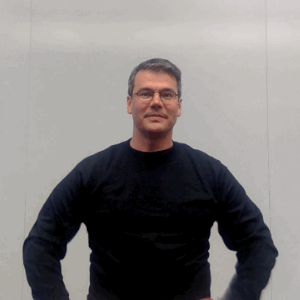 |
Copy and repeat exactly what the person who calls this TQ is doing. It’s a way for the learner to engage with the texture of the language without having to think about what things mean. “Copy what I say and what I do and you’ll figure it out.” |
| TQ: Craigslist |  |
Craigslists are sets of related words that can be practiced together outside of a sentence (e.g., yes/no/maybe or I/you/he/she). Use Craigslists to increase context, create memory tools, and practice your command of language structures. Preview a new “bite” of language by embedding it in a Craigslist. |
| TQ: dictionary addiction |  |
An anti-TQ: Don’t let this happen to you! If players are running to the dictionary every time they find a gap in their knowledge, they might have a Dictionary Addiction. While dictionaries and reference books can be wonderfully helpful tools, every minute you spend looking up words and forms is a minute you’re not speaking the language! The next time you encounter something you’re not sure about, add it to you Hit List and Let It Go for the moment. Then instead of using the dictionary to fill in Holes in Your Pocket, create a Set Up, bring it to a fluent speaker, and when you think you’ve got it, Prove It. Even though it takes longer to satisfy your curiosity about this one thing, visiting fluent speakers and using an immersion conversation to Set Up the idea will not only get you fluent faster but will strengthen your relationships and build your WAYK skills. |
| TQ: distraction |  |
Are there fire trucks screaming past you? Did your crush just walk by? Sign Distraction to indicate to other players that, momentarily, you aren’t able to focus on the language—if the distraction is within your control, fix it and then move on with the game. Sometimes you can’t resolve a distraction, but acknowledging it allows you to move forward. |
| TQ: do it for real |  |
Whenever possible during immersion sessions and lessons, don’t pretend, Do it For Real! Really draw a cat! Really jump up and down! Really wash a dish! Really drink some tea! Really throw a ball! Really go outside! There will be enough abstract things to keep track of that you can reduce misunderstandings by Doing it For Real for any simple, easy, straightforward task/object/action. Don’t pick up a cup and say, “pretend this is a dog”–while it might start off as a simple swap, the further you get into immersion the harder it will be to hold on to what you’re actually trying to talk about. If you can’t find a real dog to talk about, make an effort to find a toy dog, or draw or print a picture of a dog! |
| TQ: draw a blank | 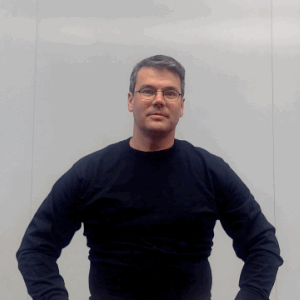 |
When hunting for language, sometimes you have everything except for one piece. If that’s the case, Draw a Blank in the air with your hands as a placeholder for the language you’re missing. Combine it with your best quizzical expression, and often your informant will be able to figure out what you need and fill it in. |
| TQ: edit |  |
Edit is a very specific kind of Accent Adjustment, used to show someone when they are using extra/unnecessary words that should be removed to make a phrase or sentence more correct. The gesture is reminiscent of old school film editing–use your fingers to clip out the part of the sentence that is extraneous and throw it over your shoulder! Here’s an English example. If someone said, “This is the my red cup,” repeat the whole sentence, but use your fingers to clip the sentence when you say the extra word: “This is [the] my red cup.” This shows the learner that the correct version of the sentence doesn’t use the extra word and they need to Edit it out: “This is my red cup.” |
| TQ: either/or |  |
Although with novice speakers it’s best to Pick One way of expressing an idea, as people increase in fluency you can use Either/Or to show that there is more than one option and each is correct and interchangeable. |
| TQ: everybody deals |  |
When you’re playing cards, you really learn the details of the game when it’s your turn to deal instead of when you’re just a player. In WAYK, when Everybody Deals, you don’t just pass the language of the lesson around (Send It Around), but all of the instructions too (the introduction, any Craigslists or Model Conversations, Copycat, etc.). This way, everyone gets to practice both the language in the lesson and how to teach it off to someone else, making it easier for them to fly solo as teachers as soon as possible! |
| TQ: eyebrows of the elders |  |
The fluent speakers you work with may not always tell you when you’re not saying something quite right, but their expression may change. Some speakers might wince, frown, look surprised, or look confused when you say something in the language that doesn’t sound right to them. Be attentive to your speakers’ facial expressions (especially their eyebrows!) during an immersion session and notice their reactions. |
| TQ: fail fast |  |
There’s scientific proof that mistakes are part of the process of learning a language, so you might as well be smart about it! Making mistakes on purpose can actually help you learn language faster. When you’re hunting, push your new language to the limits as quickly as you can. Try variations on what you’ve just learned until you break it. If you Fail Fast, you’ll understand your Bite-Sized Piece quickly and spend more time Proving It after you’ve gotten past those first intentional mistakes. |
| TQ: familiar ground |  |
When learning a new language it is important to build on what you already know. Familiar Ground is a snappy way to remind each other to begin an immersion session using familiar structures before tackling something new and unfamiliar. Familiar Ground is also a nod to our “language hunting” metaphor: learning to hunt for language is a lot like learning to hunt for food. It is easier to find what you’re after when you’re in familiar territory looking at a landscape that you know well, even if today you go down a trail further than you ever have before. By starting out on Familiar Ground in language learning you may be able to keep yourself from getting lost or Full! |
| TQ: faster | 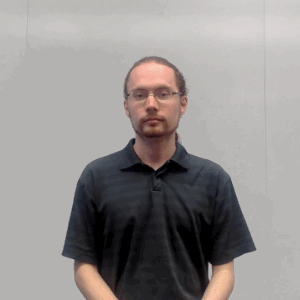 |
Is someone speaking too slowly? Use this technique to get them to speed up. |
| TQ: finished | 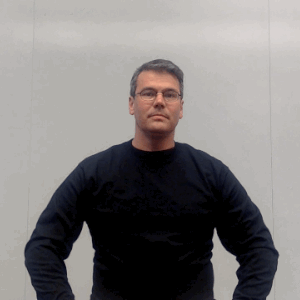 |
Have you been playing with a particular piece of language for a while? Use this sign to indicate that you’ve got it or to ask someone else if they’re done. If learners have already heard the language repeatedly, you don’t need to keep practicing it over and over again. Signal Finished as soon as you can. |
| TQ: first pancake |  |
Like grandma always says, the First Pancake might taste ok, but it’s not going to be pretty! But you can’t make a beautiful second pancake without having made the first! Pancakes get better as you cook the whole batch and language learning and teaching get better with practice and experience. Don’t be discouraged by your early attempts! (See also: Fail Fast) |
| TQ: fix one thing | 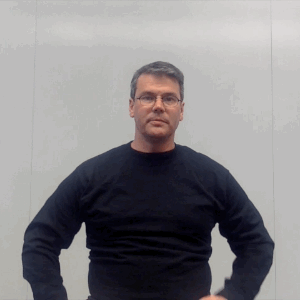 |
If you’re teaching a novice, beware of Filling them up too fast by correcting all of their grammar mistakes or pronunciation errors. Choose just one relevant thing to fix that’s related to the Bite-Sized Piece you’re teaching. Go for the one fix that will get the most “bang for your buck.” |
| TQ: flip it |  |
It can be tough to get correct word order for a new language. Flip It is an easy way of indicating that you’ve used the right words, you just need to flip their order! |
| TQ: fly away angels |  |
While Angels are meant to be helpful, sometimes they’re just not needed. Maybe, after you’ve had great Angels, you’re ready to fly without a safety net! On rare occasions, Angels can be Distractions. This could happen with a big crowd of Angels, with Angels that are very loud or very eager, or with players who are very sensitive to background sounds. If Angels are not helpful, you can tell them to Fly Away. However, it’s always a good idea to ask your best Angel to stick around (You’re My Angel), just in case. |
| TQ: focus |  |
Help get each other back on track! Throw Focus if someone in your group is off on a tangent, socializing, texting, or distracted by technology, but especially if they’re talking ABOUT the target language instead of talking IN the target language! |
| TQ: follow-up question |  |
Follow-Up Question is a powerful TQ for developing conversational proficiency in your target language. In several language activities (Morning Question, Conversation Hour, Same Conversation, Poof!, List Time, etc.) we like to add Follow-Up Questions to the routine to extend our immersion time and challenge our learners. Start by Sending Around a basic question (Did you eat breakfast today?). Then on each person’s turn, they ask 1 or more Follow-Up Questions based on the answers they hear. Follow-Up Questions could be simple Make Me Say Yes or Make Me Say No Questions (Did you eat toast for breakfast?) or they could be more complex (Who cooked the eggs for you? Do you always eat oatmeal for breakfast? What’s the best breakfast you’ve ever eaten?). While everyone’s first question will be the same, the Follow-Up Question might be different for every person in your group. This practice helps prepare you for spontaneous conversation in the future, and builds the immersion skill of creating new questions based on the answers you hear. In the wise words of Sadie Coyle from Kodiak, “Choose any question to start with. The magic is in the follow-up question!” |
| TQ: full |  |
“When you eat too much, you puke; when you learn too much, your brain pukes!” We train WAYK players to notice, mark, and share their present capacity for learning or teaching. In every lesson, you’ll reach a point where you’re saturated–beyond this point it’s almost impossible to take on any more information. But if you’re not paying attention to your saturation level, you might get too Full (i.e. overwhelmed and frustrated). Being tired, hungry, or distracted can make you fill up even faster. Take breaks before anyone gets too Full; it will be easier to jump back into the game. Full is like a muscle, the more you actively exercise it the stronger it gets. Over time, you’ll find that it takes you longer to become Full. |
| TQ: full break | 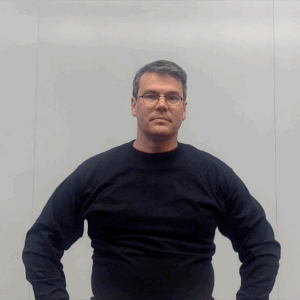 |
When someone in the group notices that it’s time for a break, they can throw this TQ. A good time for a Full Break is when you see fellow players (or just the Canary in the Coal Mine) showing lots of Full Tells. While Breaks are great, be aware that there are a lot of ways to reduce Full levels while staying in the target language: change the scene or activity, return to a Same Conversation, or just Limit more. Experienced players, however, know when to call for a total Break in the action or when the group just needs a Scene Change. |
| TQ: full check | 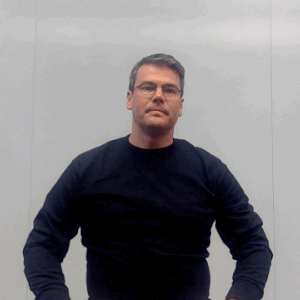 |
A Full Check allows players a chance to check in with each other to ensure no one is being pushed to the point of mental exhaustion. It’s always good to do periodic Full Checks. Go around the room and ask everyone to indicate on their Full Meters how Full they are. If someone indicates they’re Full, it’s a good time for a break. |
| TQ: full meter |  |
Your Full Meter goes from your belly button (I’m ready!), to your chest (Getting kind of Full!), to the bottom of your chin (I’m Full!), to the top of your head (I’m chock-Full!), to way over your head (Why am I here?!). Call Full before you get Full! Indicate your current level on your Full Meter to communicate with your fellow players. |
| TQ: full sentences |  |
Getting fluent means being able to wield Full Sentences in the language you’re learning. WAYK players urge each other to complete sentences as much as possible–no one-word answers here! |
| TQ: full tell |  |
A Full Tell is a lot like a poker tell; sometimes you “think out loud with your face.” Maybe you scratch your nose if you have a good hand or clear your throat when you have bad cards. Likewise everyone has their own physical indications when they’re getting Full. Pay attention to your fellow players when they’re not Full, so you can see what changes as they get Full. Watch their posture, notice their eyes, check their hair, and be attentive to other behaviors. Once you are attuned to someone else’s tells, you can help them calibrate their Full Meter and everyone can stay in the game longer. |
| TQ: go for glue |  |
“Glue” is the term we use for pieces of language that connect phrases, sentences, or ideas together allowing learners to create longer and more complex expressions. Sometimes we contrast this idea of “glue” with what we call “pink” words: simple vocabulary words or phrases. We encourage learners to focus on learning and practicing “glue” words over “pink” words. Lists of nouns, colors, numbers and animals don’t really increase a person’s ability to speak the language. Of course, a certain number of vocabulary words are necessary to relay thoughts, but it is the “glue” of a language that actually facilitates a conversation and by extension the ability to create and maintain an Immersion Bubble. When given the option to learn vocabulary or glue…always Go For Glue! |
| TQ: high/low |  |
High/Low is a specific way to Overdo It. If Three Times is getting a little stale, add some goofy voices to your conversation: go for your best, highest, Mini Mouse voice and gradually work towards your deepest lowest Barry White voice. It’s hard not to enjoy each other speaking in a super high or super deep voice! Commit to High/Low right from the beginning, or it will just be awkward and weird. |
| TQ: how fascinating |  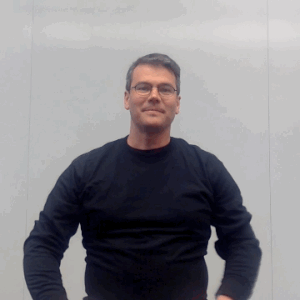 |
Everyone (yes, everyone!) makes mistakes when they’re learning or teaching a language. It’s an inevitable part of the process and an awesome opportunity to learn. We call How Fascinating on ourselves or others when we say something “wrong,” get frustrated, or finally understand an amazing new thing about the language we’re learning. Make a habit of celebrating mistakes and successes early and often; using How Fascinating for both helps to blur the line between them. If you accept and embrace mistakes, you can get yourself and others fluent faster and with less stress. |
| TQ: hunting book |  |
Field notebooks are a common tool used by linguists and anthropologists to collect data. We use a similar tool in our language revitalization work. Hunting Books are a codified system for collecting notes and sharing information. The Hunting Book format has been developed by WAYK in collaboration with Indigenous language learners from many communities. We’ve revised this format multiple times to try to find the most useful way to track and organize information. Learners and teachers spend time training each other to take notes within this format so they can easily understand the notes in each other’s books. It is extremely helpful to have a regular and recurring check-in event where learners and teachers “pass Hunting Books” around the circle to see what language pieces each person is tracking. |
| TQ: I do believe in fairies |  |
If you do Kill a Fairy by translating, whether by accident or because of your devious nature, there is a way to right this heinous wrong. All you have to do is clap your hands and say “I Do Believe in Fairies!” and the tiny, magical, language fairy comes back to life! It’s like How Fascinating! for breaking immersion. And just like How Fascinating, everybody joins in. |
| TQ: I’m full! |  |
This is when you say your brain is Full and you need a break. Take plenty of Full breaks and take them often. Get some fresh air or eat a healthy snack. Go back to your target language when you’re ready. |
| TQ: I’m your angel |  |
A way of signaling to someone sitting in the Inner Circle in a Lotus that you are their Angel. You are there to help them out. |
| TQ: I understand |  |
In immersion learning environments, it is common to encourage each other to take language risks and make mistakes. Learners have permission to get it almost right or Mumble, but how do you let someone know that their Mumble worked? That they conveyed meaning even if there might be mistakes in what they said? Telling someone “I Understand” signals that their overall message has been understood. The understander might be a more proficient speaker who can then choose to offer Accent Adjustments. But the understander might also be someone less proficient who doesn’t know how to fix the mistakes (or if there even were any!). |
| TQ: immersion bubble |  |
If you want to learn French, Spanish, Japanese, or a similar language, there is usually a place you can go (a country you can travel to) where you can walk down the street and immerse yourself in conversation, signage, media, and experiences in the target language. For many Indigenous languages, such places don’t exist right now. Instead of passively absorbing language in a cafe in France, Spain, or Japan, we have to actively create and hold a pocket of immersion in language classrooms, schools, homes, offices, and community centers. We call these Immersion Bubbles. You can use Immersion Playlists, labels, posters, and books to enhance your bubble and make everything you look at and interact with related to the target language. But at its most basic, an Immersion Bubble is a place and time when people commit to not using English and only using the target language. You can Blow the Bubble to show people you’re starting immersion and Pop the Bubble when your immersion time is up. |
| TQ: immersion playlist |  |
For more commonly spoken languages you can travel to a location where the language exists in the atmosphere, and even the ambient noise is immersive. Even without traveling to such a location, you might be able to surround yourself with radio, TV shows, movies, podcasts, or music in the target language (not to mention print media–posters, newspapers, magazines, etc.). For many Indigenous languages, it is hard to find a location where the ambiance is immersive, but an Immersion Playlist can help you create your own Immersion Bubble. Collect existing recordings that are ok to share and build a playlist of songs, stories, speeches, prayers, and conversations for your learners to use. |
| TQ: immersion sprint |  |
Many times we jump into a language activity with a specific goal in mind. During a learner-driven “language hunt,” a learner is trying to pull a specific piece of language from a speaker. During a speaker-driven lesson, the speaker is trying to push something specific to a student. There are times when our primary goal is not a specific piece of language, but just to clock some time in the language. We call these Immersion Sprints. Can we stay in immersion for 10 minutes? 15 minutes? 30 minutes? Longer? We recommend setting a goal for Immersion Sprints as often as you can, and practicing conversation in pairs or small groups. Not only will you get to know more about members of your learning community, but, inevitably, you will find some piece of language that can be pushed, pulled, or swapped. |
| TQ: in threes | 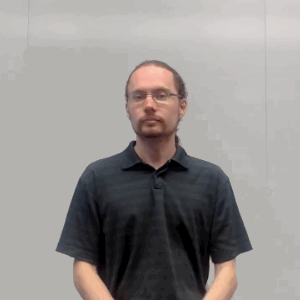 |
By repeating words, phrases, Craigslists, or conversations Three Times, learners get three times the chances to hear new words, and three times the opportunity to practice! Two times is too few, and four times starts to get boring. |
| TQ: information radiator |  |
Bask in the glow of warm, cozy data! We love filling the walls of the language space not just with labels and posters in the language, but with two-dimensional interactive tools that help us track language, learning, and projects. Organize your wall space with large posters, whiteboards, and clipboards–we use these to track lesson progress and curriculum design; daily, weekly, and monthly schedules; language pieces that learners are tracking; and more. Keep your Information Radiators tidy, since unruly walls might mean extra visual noise for some. There is a lot of value in taking all of this information out of planners, binders, and digital folders and posting it on the wall for the entire team to see and interact with. |
| TQ: inner circle |  |
When playing in a Lotus, the players closest to the center are the Inner Circle. They are the active participants in the game. Use Send It Around to have everyone in the Inner Circle practice the language. Once players in the Inner Circle are Finished, they can step out of the Inner Circle to become Angels for the players who fill in their spot. The Inner Circle will be replenished by other players in the outer circle and the Lunatic Fringe, and if seats aren’t immediately filled use Black Hole Vortex to fill them! Limit the number of players in the Inner Circle to a maximum of four. Beyond the Lotus, an Inner Circle can refer to any group of players who are the active participants in a lesson (a Walk, a Same Conversation, a Game People Play, etc.), with everyone else as Angels or Fringe. |
| TQ: killing fairies |  |
Immersion environments are magical Bubbles that are difficult to create and maintain. Once they’re made they lead to comprehension and fluency. When you translate, a fairy dies. A small piece of the language loses its magic. Don’t let this go unnoticed! After thoroughly squishing your fairy, proceed directly to I Do Believe in Fairies! |
| TQ: label it |  |
“What’s that word again? Oh yeah! Coffee pot! How do I keep forgetting, I pick it up five times a day!” Sometimes our brains get stuck on certain words. If you’re developing a lesson, and for some reason everyone is struggling with a certain word, swap it out! Choose a different noun or verb. But if there’s a word that you absolutely need to use, but everyone keeps forgetting, slap a label on it! It doesn’t have to be fancy. Keep painter’s tape and a marker on hand for instant labels and then (if you want) you can make fancier labels later! |
| TQ: let it go |  |
Like How Fascinating and Sorry Charlie, Let It Go is used to “reset” the conversation. Sometimes you start a conversation or lesson that’s not worth pursuing. You might be about to Sorry Charlie someone (possibly yourself) or you realize that a story is going nowhere or you forgot the punch line to your joke. Instead of expecting your great Angels to Pull You Through It, it might be better to ask everyone to just Let It Go. Let It Go gives everyone permission to drop the conversation entirely and move on completely without any attempt to salvage any part of it. It’s like a giant “Never mind!” or “Let’s pretend this never happened.” Both learners and leaders are encouraged to recognize a low payoff/high frustration situation and back out quickly by Letting It Go. Some super great players might be reluctant to stop helping, so you may need to be rather insistent that they Let It Go and exaggerate your hand sign by vigorously fanning yourself until your hair blows back! |
| TQ: let’s get this party started | 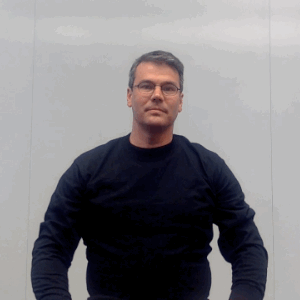 |
Create your Immersion Bubble as early as possible. Already be playing when your first student walks through the door. Don’t waste time waiting for everyone to show up! |
| TQ: lick it |  |
A great way to use Obviously and Overdo It to demonstrate the idea of “mine” and “yours.” Take whatever prop you’ve been using and Lick It (hopefully it’s a cup, a cookie, or, at the very least, a clean rock) to establish your ownership of it. Lick It is also a great way to elicit an Obvious response to “Which rock do you want?” |
| TQ: limit |  |
Limit allows players to narrow the scope of an interaction to what can easily be absorbed. Intentionally reduce chaos, distractions, options, variables, vocabulary, topics, and concepts to increase comprehension and speed. Narrowing the focus of the hunt or lesson to one grammatical feature (Bite-Sized Piece) at a time will keep everyone on target and prevent them from getting too Full. Throw Limit at the first sign of oddball examples, obscure linguistics, exhaustive lists, curveballs, or tangents. |
| TQ: lotus |  |
A Lotus is just one of many ways to use WAYK to deliver a lesson. When you choose to use a Lotus, arrange players around a table in concentric circles. The Inner Circle actively Sends Around a piece language. The outer circles and the Lunatic Fringe serve as Angels for the players in the Inner Circle. Once a learner in the Inner Circle masters the lesson’s Bite-Sized Piece, they get up and move to take their place as an Angel in the Lunatic Fringe. As players graduate from the Inner Circle, their seats are taken by players who, thus far, have only been practicing in the Fringe. Using this progression, everyone will have a chance to Angel as well as sit in an Inner Circle “hot seat.” If seen from above, this arrangement of players looks like the petals on a lotus flower, hence the name. |
| TQ: louder | 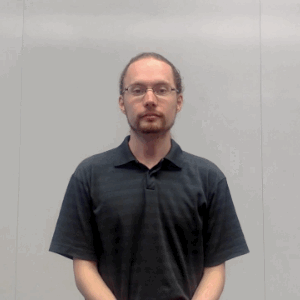 |
Is someone speaking too softly? Use this sign to ask them to speak up. |
| TQ: lunatic fringe | 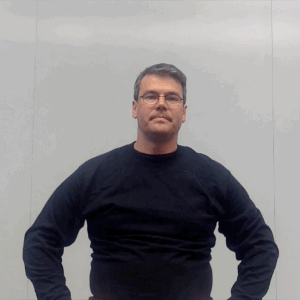 |
The outermost circle of the Lotus formation is called the Lunatic Fringe. These are players gearing up to be Angels by practicing language and prompting the Inner Circle when they need help. The Lunatic Fringe is active—always moving into the best positions for Angels, filling empty Inner Circle seats, fixing Distractions, keeping Full levels low, improving Set Ups, and generally being awesome. Lotus or not, if there’s language going on, nobody should be standing around twiddling their thumbs—jump into the Lunatic Fringe!. |
| TQ: make me say no |  |
Ask a yes or no question to which you already know the answer is no. You get to practice asking questions, hear another repetition of the language and see if there are changes when a statement is negated. This is one of the main standbys for teaching and hunting language. When teaching, always get leaners to first say “yes” and then “no” in the target language. This not only teaches basic conversational skills and affirmation and negation in the language, but also opens up the conversation to conditional and hypothetical responses (if/for/and/or/but/maybe/etc.). |
| TQ: make me say yes |  |
Ask a yes or no question to which you already know the answer is yes. You get to practice asking questions and hear another repetition of the language. This is one of the main standbys for teaching and hunting language. When teaching, always get learners to first say “yes” and then “no” in the target language. This not only teaches basic conversational skills and affirmation and negation in the language, but also opens up the conversation to conditional and hypothetical responses (if/for/and/or/but/maybe/etc.). |
| TQ: meadow |  |
The Meadow is a safe space where you can go to recharge and breathe a sigh of relaxation (“Ahhhh”). Whether it’s an actual meadow with flowers and butterflies, a quiet corner of the room, or simply a quick break in the lesson, head to the Meadow if you’re feeling Full or overwhelmed. Throw Meadow (along with an “Ahhhh” sigh) to indicate that that’s where you’re headed or to ask another player if they need a break. Fill your Meadow with comfortable seats, dreamy posters, stuffed animals, plants, and, if possible, healthy snacks (Food for Thought). Make sure everyone understands the purpose and boundaries of the Meadow (and beware of Meadow overuse/abuse). There should be a group understanding that people in the Meadow won’t be bothered by others and can rejoin the lesson in their own time, once they’re less Full. |
| TQ: milestone |  |
Milestones are a key part of building a curriculum. While fluency is the goal for many learners, sometimes it might feel intangible and unattainable when you’re just starting out. An intangible and distant goal is not the best motivator, so we look for more short-term goals on the road to fluency. Identifying these Milestones on a language learner’s journey helps home in on the lessons that need to be developed to scaffold towards each Milestone. An ideal milestone is something that is self-contained, relatively short, and familiar to many people in your community. Milestones are often things that people want to learn how to do in the language (e.g. “I want to be able to introduce myself, I want to be able to say a prayer, etc.). Milestones will be different for every community, because every community has different needs and different materials to draw from. |
| TQ: minimal deviation |  |
This is an easy way to hunt or teach your next Bite-Sized Piece. Just making one change to the Set Up in front of you should get you a new bit of language. For example: Is there a single, plastic, red cup in front of each person at the table? Then change one thing: add a blue cup, add a bigger cup, find a glass instead of a plastic cup, give one person two cups, etc. But only change ONE thing at a time! Don’t throw in a large, blue, glass cup, because your change won’t be Obvious enough, and you’ll have blown Limit. |
| TQ: Mr. Miyagi’s chopsticks | 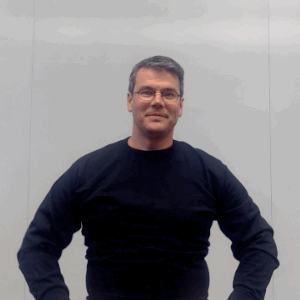 |
Like Mr. Miyagi catching a fly, you must focus precisely on one tiny piece of language. When you’re hunting from a fluent speaker, you can’t hunt everything they throw at you. Pick one thing from the barrage to hunt using the chopsticks of your mind. |
| TQ: Mr. Peanut’s monocle |  |
There are a lot of clever ideas you can use to remind your group (and visitors) about maintaining your Immersion Bubble: post signs as announcements/reminders, wear a card around your neck, wear special tee shirts, or put out a jar and collect coins as an “English tax” if people use English. While all of these can be fun, the main strategy we use once we’ve Blown the Bubble is called Mr. Peanut’s Monocle. Make a circle with your thumb and index finger and hold it up to your eye like a monocle. If you must speak English (or another language that’s not your immersion target), then you must put on this “monocle.” The power of the monocle is that it allows you to look through the Immersion Bubble just long enough to say what you need to in English, and then return to the target language (hopefully without Popping the Bubble for everyone). Appropriate usage of Mr. Peanut’s Monocle is usually for managing important logistics: moments like “the soup is about to burn,” “the electrician is at the door,” or “the toilet is clogged.” The monocle is just annoying enough that it’s impractical to use for longer, casual conversations. Of course, if there is ever a major emergency, then the bubble is automatically popped until the emergency is resolved. |
| TQ: mumble |  |
“Close enough is good enough…for now.” Mumble allows you to prioritize communication over correctness. A learner signals Mumble to create a correction-free space when they’re uncertain about a piece of language. You can Mumble through pronunciation, vocabulary, or grammar. A speaker signals Mumble to encourage a learner without giving them the false impression that their speech is correct. A speaker can also signal Mumble to indicate that they aren’t exactly sure about the right way to say something. When players Mumble they’re not being sloppy or lazy. Rather, Mumbling gives them permission to make mistakes until their fluency grows enough to either self-correct or understand corrections. |
| TQ: my turn, your turn |  |
Make sure all of the players in your game get a chance to practice formulating questions as well as answering them. You need to make a sound when you pass off your turn. BAM! ZING! Chicka-chicka-POW! |
| TQ: no-pressure refresher |  |
Before launching into a new ride, players may go through a quick review of what they’ve learned previously. Leaders can announce a No Pressure Refresher (NPR) or learners can request one. |
| TQ: obviously! |  |
When teaching or hunting language, you want your props and your Set Ups to be simple and Obvious in order to stay in the language and remove any sort of confusion about what words or grammar you are trying to teach or hunt. |
| TQ: opposites |  |
Use Opposites to hunt unknown words or expressions from known ones. Use Overdo It to hunt contrary meanings or antonyms. Once you’ve established the idea of “this tastes good,” throw Opposites to hunt “this tastes terrible!” |
| TQ: pick one |  |
In every language there are myriad ways to express one idea. If you ask any two speakers to describe an object, tell a story, or do a task there is very little chance that they will do it exactly the same way every time. When working with speakers or with new learners, we recommend using Pick One to choose one way to practice first. You can’t teach newbies the whole language in one night, so pick the one way that’s going to get them the most mileage (most correct, most commonly used, most connected to the rest of your lessons) and hold back on the rest for now. You can tell learners that more ways exist and, when they keep coming back to class, you’ll be able to show them more and more possibilities. If you start with Pick One, your learners will build their capacity to understand all of the variations in the future. |
| TQ: pick sides |  |
During Angel Training, make it clear that Angels should pick one person to help. Only Angel one side of the conversation at a time or you risk confusing the players you’re trying to help. If another person needs help, get another Angel to be on their side. |
| TQ: point to your angels | 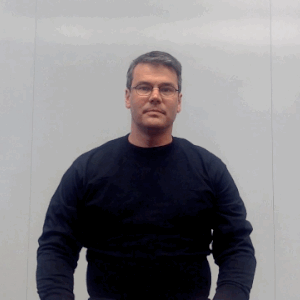 |
When you’re leading a Lotus with a large Lunatic Fringe, and you’ve already called “Angels, Point To Who You’re Helping!” follow it up with “Inner Circle, Point To Your Angels!” This will confirm that the Inner Circle knows who to look at for help. If there’s any confusion, proceed to Angel Boss and Pick Sides. |
| TQ: pop the bubble |  |
Pop the Bubble signals to your group that there is a need to break out of immersion, either briefly (to check in about something you’re hunting or the mechanics of a lesson) or at the end of an immersion session. |
| TQ: prove it |  |
Prove It is a critical part of the language hunting and learning process. As soon as learners think they have a good understanding of a new language piece, they should take the reins and try to prove their understanding to a more fluent speaker. They can do this by making a Set Up and using the new language piece in context. This way learners are actively showing what they know in immersion instead of just nodding along in silent understanding or translating into English. If a learner is just nodding along, the fluent speaker can ask them if they’re ready to “put their money where their mouth is” and prove that they can wield the language. Often when proving their grasp of one piece of language, learners will encounter a new Bite-Sized Piece that they don’t quite understand. By using Set Up and Prove It in tandem, learners can extend their immersion sessions almost indefinitely! |
| TQ: pull me through it |  |
This is a sign that one player can give another when they are at a loss for what to say or do next. They may start a response, then give the sign for Pull Me Through It and the other player(s) will then help them finish the sentence. Essentially, it’s a request for something to copycat: “If you help me, I can do it.” Expert angels are always ready to Pull someone Through It. |
| TQ: return to superior |  |
When learners are starting out it can be mentally taxing and filling to stay at a novice level in the target language for extended periods of time. When this happens, returning, even briefly, to a language you have total mastery over (English, for example) is a way to “unfill.” This is a great time to talk about TQs. Watch out! You might notice learners inadvertently Returning to Superior when they’re getting Full (a Full Tell). |
| TQ: right way, wrong way |  |
One specific way of giving an Accent Adjustment is with Right Way, Wrong Way. The easiest way to hear how exactly you are being corrected is to hear the incorrect way and the correct way next to each other. If you’re giving someone an Accent Adjustment (or if you, as a learner, are trying to process an Accent Adjustment) you can give a thumbs down while repeating the “wrong way” and a thumbs up while repeating the “right way”: Pasghetti (thumbs down), spaghetti (thumbs up)! As with any Accent Adjustment, don’t push the correction too far beyond Three Times; a learner might not yet be able to hear the precise correction they’re being given and just get frustrated. |
| TQ: sad/mad/glad |  |
Sad/Mad/Glad is a specific way to Overdo It. If Three Times is getting a little stale, add some goofy emotions to your repetitions. A good strategy is: be sad, then mad, then glad. Make sure you mark the beginning with extreme sadness, and leave everyone on a happy note with jubilation and joy! Keep anger sandwiched in the middle so nobody thinks you’re flying into a rage in the middle of the language lesson. You must super extra Overdo It right from the beginning, or Sad/Mad/Glad will just be awkward and weird. |
| TQ: same | 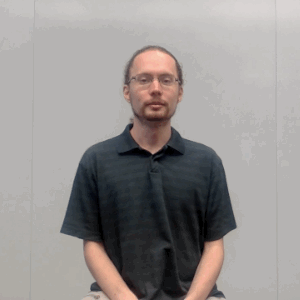 |
Throw Same to show someone that there are two equivalent ways of expressing the same thing or that two words or expressions are interchangeable. Learners can throw Same to ask if two things that they’re hearing are even. |
| TQ: same bat time, same bat channel |  |
Use this TQ to establish regular times for your language work each day, week, or month. For example: morning meeting always starts at 8:45 am, language class is every Monday night at 6pm, and immersion walks happen on the first and third Wednesdays each month. When scheduling language sessions, events, classes, or programs, it is effective to choose a time and rarely, if ever, change the time or cancel. Of course, there may be extenuating circumstances, but if you hold to a strong schedule, your language participants will never be in doubt about when classes and events are happening. If you have to change the meeting time for a long-standing event, give extra support and reminders to help everyone migrate to the new meeting time. |
| TQ: same conversation |  |
Same Conversation is a core WAYK TQ. Establish foundational conversations with your student, teacher, or fluent speaker(s) that you can then build upon and deconstruct, and go back to over and over again. Milk these conversations for all they’re worth. This is a great time to weave in TQs: A Few of My Favorite Things, Familiar Ground, Limit/Bite-Sized Pieces, Set Up, Prove It, Make Me Say Yes, Make Me Say No, and Start at the Beginning. You’ll be surprised how talking about the same thing repeatedly can skyrocket your fluency and provide the perfect platform for free form hunting. This is the essence of WAYK. |
| TQ: scene change |  |
Keep things fresh and fun by using a variety of activities and modalities in your language sessions. The repetitions that you need to get fluent won’t become boring if you experience them in different settings while doing different things. We recommend alternating sedentary and mobile activities, and aiming for a 1 minute minimum and 25 minute maximum for any single activity. We encourage both leaders and learners to suggest specific scene changes including: a Walk, a Same Conversation, a Game People Play, or a total Break, if needed. Changing scenes early and often will keep the group’s Full levels low for a long time. Remember: the younger your audience is, the more often the scene will need to change. Over time, you’ll improve your ability to know exactly when and how the scene should change to maximize your immersion sessions. |
| TQ: send it around | 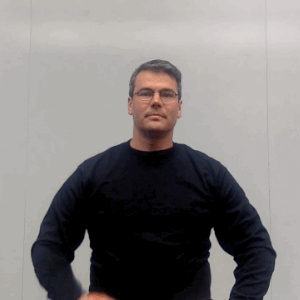 |
Use Send It Around to indicate that you’ll be passing language around a circle using My Turn/Your Turn. Make sure you always send language around so all players get a chance to practice, including your fluent speakers/informants! |
| TQ: set up |  |
WAYK players use Set Ups instead of textbooks, worksheets, and dictionaries to extract language from real situations. A Set Up might take the shape of objects on a table, drawings, pictures, or people acting out a scene. Use a series of Set Ups (Triangulation) to make it blatantly obvious what isolated language is the target of your conversation or lesson. Players can signal Set Up to request a physical scenario that exemplifies the target language. You can also signal Set Up to let other players know if you’re about to construct an example for the language, so they don’t get confused when you run around the room or out the door to gather props. WAYK players strive to become masters of Set Up and create crystal clear examples and carefully constructed experiences to make language vivid and memorable. |
| TQ: shared experience |  |
Establishing and maintaining an Immersion Bubble in a group of learners is easier if they all have something to talk about. Language exchanges and conversations are even easier when the participants can share memories of some of the same events. Creating moments of shared memories or Shared Experiences can help build a community of learners and teachers. Each Shared Experience gives all the participants a familiar topic and a shared understanding of real context that they can use to practice language (see: Same Conversation). Create a Shared Experience as soon as you can, and then talk about that Shared Experience early and often. As you become more fluent, the details of the memory will be easier to talk about in immersion, and the group can easily give language support since everyone is already familiar with the story that one person is trying to relay. |
| TQ: shifting gears |  |
Announce a topic shift by throwing Shifting Gears, a fun way to let everyone know you’re changing topics, so no one gets left behind! |
| TQ: show off |  |
Akin to Launch, Show-off prompts learners to say as much as they can, showing off their linguistic ability, while aiming for 80/20 and giving their informant an abundance of language to work with. When someone uses Show-off it’s easier for a fluent speaker to quickly assess a learner’s fluency and identify any Holes in the learner’s Pocket (see: Hole in Your Pocket). |
| TQ: sign language |  |
WAYK’s Bridge Language of choice is ASL (American Sign Language) and Signed Exact English, although any shared signed language could be used. WAYK players use Sign Language in two ways. First, combining gestures with language is a proven pedagogical technique for language learning. Instead of inventing our own gestures, we use ASL, an existing, accessible, and non-proprietary language. Secondly, Sign Language helps us maintain an immersion environment. When we can’t express ourselves in the target language, we can fall back on gestures instead of slipping into English (and breaking the Immersion Bubble!). ASL has its own grammar, however the Sign Language you use with WAYK will acquire the grammar of the target spoken language instead because that’s the language you’re thinking in. Use Sign Language by connecting signs with vocabulary words and grammatical structures, then use the signs and speech simultaneously. You can also ask for clarification about a specific word or structure in the target language by saying the word and throwing Sign Language (with questioning eyebrows) to request the associated sign. Check our Resources page for links to online ASL dictionaries. |
| TQ: sing along | 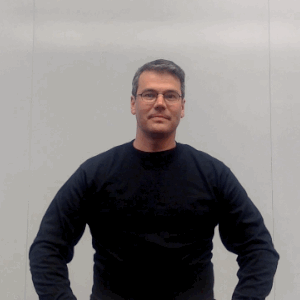 |
Once a group Copycats a few times through, they might be ready to Singalong with the leader. Either the leader or learners can throw Singalong and, instead of waiting to copy the leader, everyone speaks and signs in unison. |
| TQ: slower |  |
Is someone speaking too quickly? Use this technique to get them to slow down. When someone throws Slow Down, don’t change what you say, just say it slower! |
| TQ: slow/fast |  |
Slow/Fast is a specific way to Overdo It. If Three Times is getting a little stale, add some variations to the speed of your conversation: start in super slow motion and gradually get faster and faster with each repetition until no one can possibly keep up. End the chaos with a How Fascinating! Make sure to signal Slow/Fast before you start so that everyone knows what’s going on! |
| TQ: softer | 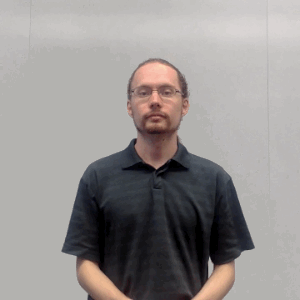 |
Is someone speaking too loudly? Use this technique to get them to quiet down. |
| TQ: sorry, Charlie |  |
Speakers of differing proficiency levels can throw Sorry, Charlie to indicate that the conversation at hand is too advanced for one (or more) participants. There should be no embarrassment in identifying and acknowledging a Sorry, Charlie. Rather, the idea is to protect a learner from getting too Full, while, at the same time, making sure they are getting lots of useful language at their level. Anyone should throw Sorry, Charlie as soon as they notice a learner trying to produce or understand beyond their ability. After Sorry, Charlie is thrown, there are several ways to get back on track: Start at the Beginning, Limit what you’re talking about, make a new Set Up, make things more Obvious, reduce Distractions, retrace a Same Conversation, Split the Cell, Let it Go and move on to something else, or just simplify your language. Keep in mind, learners will often Sorry, Charlie themselves by attempting to talk about something beyond their linguistic ability. |
| TQ: spare the fairies |  |
When you’re speaking in the target language, imagine each word and grammar concept is a tiny, magical, language fairy floating overhead. These ideas have vitality and meaning that often just can’t be captured in another language, but only make sense in the target language itself. When you succumb to translation or explanations, you risk killing the nuance, character, and sparkle of that language. Besides, there’s a victorious feeling that comes with understanding concepts in the target language without translating. Don’t spoil it for other learners or for yourself by Killing Fairies. Throw Spare the Fairies with a gasping, dramatic, “Don’t do it!” breath, when you suspect a player is on the verge of translating, explaining, or spoiling. |
| TQ: start at the beginning |  |
If you ever get stuck or flummoxed, a great strategy is just to start whatever you were saying over again from the beginning. If a conversation gets confused and there is a How Fascinating! moment, don’t waste time deciding where to restart, just hit the “reset” button and start over. Likewise, if you ever feel awkward about initiating a conversation, a quick solution is to Start at the Beginning by asking, “What is that?” |
| TQ: switch roles |  |
Very similar to My Turn, Your Turn–but instead of just giving everyone a chance to ask and answer, you’re giving everyone a chance to practice all of the roles in a scenario. For example, maybe you’re practicing language you’d use at the store and one person is the “customer” and the other person is the “cashier” There are questions that both the customer and cashier might ask and answer. Make sure you give everyone a chance to play both roles during a session like this. |
| TQ: technique | 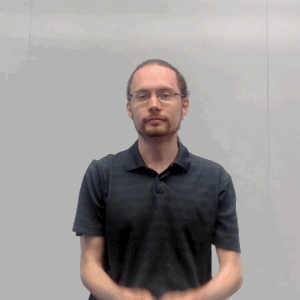 |
Techniques, or TQs for short, are the essence of WAYK. TQs are a collection of tested strategies for maximizing the speed, ease, and efficiency of language transfer. Throwing a TQ elicits a specific action or reaction that streamlines learning. Any player (teacher or student, learner or leader) can throw TQs at any time. Signaling Technique provides a time out to make suggestions or discuss how to further the game or improve the interaction. As a community, we have developed TQs for immersion, documentation, classroom management, community organizing, curriculum development, and more. |
| TQ: throw techniques at me |  |
A great way to Get the Party Started, this activity is a No Pressure Refresher for the Techniques a group has learned. Start the session by having someone call out, “Throw TQs At Me!” Everyone signs a different TQ to that person. Keep signing the same TQ until the leader recognizes the sign you’re doing by saying the TQ name and Copycatting the sign. Send It Around (“Throw TQs at him!” “Throw TQs at her!”) to give a few more people the chance to call out the TQs they see. Give each person 30 seconds to call out TQs; this activity shouldn’t take longer than 2 minutes total. When you’re done, check in to see if there were any signs that participants didn’t recognize. Review them briefly for 1 minute and then you’re ready for today’s lesson! You can also Throw TQs at Me during transitions in your lesson, after a break, or as a wrap up. |
| TQ: travels with Charlie | 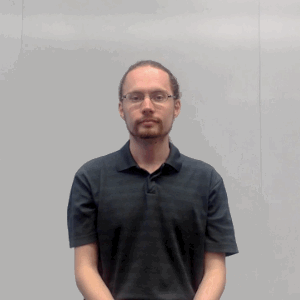 |
Travels with Charlie is how we refer to WAYK’s quick and dirty version of the ACTFL proficiency guidelines. By no means a replacement for getting trained by ACTFL, Travels with Charlie gives learners a glimpse of the different levels of fluency: Novice (Sesame Street), Intermediate (Dora the Explorer), Advanced (Larry King Live), and Superior (Charlie Rose). Knowing what it means to be fluent helps us make decisions about the most efficient ways to get there. We all start on Sesame Street and are trying to get on Charlie Rose. |
| TQ: triangulation | 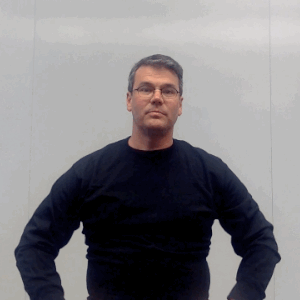 |
In the same way that GPS requires at least three different satellites to pinpoint your location, language concepts require at least three Set Ups to pinpoint meaning. When creating a Set Up to illustrate a Bite-Sized Piece of language, try to find at least three very Obvious examples. The person that you’re pulling language out of or pushing language on to may not be able to figure out the target piece from a single example. By the second example they’ll see where you’re going and the third example should be a concrete confirmation of what they’re already expecting (i.e. “Duh!”). It doesn’t hurt to have a fourth Set Up in your back pocket in order to Prove It. Triangulation is another way of presenting information In Threes. |
| TQ: whisper to a scream |  |
Whisper to a Scream is a specific way to Overdo It. If Three Times is getting a little stale, vary the volume of your conversation: get everyone to start with a whisper and gradually get louder and louder with each repetition until everyone is yelling. Immediately drop it back to a whisper for one or two repetitions, jump back up to a scream, then back to a whisper and do your final repetition at normal volume. Check pronunciation while people are whispering. It’s easier to hear mistakes so you can make Accent Adjustments. |
| TQ: wingman |  |
It’s always good to have a Wingman when you go out and hunt language. It can be difficult to try and remember everything that a fluent speaker might say. Collectively, you and your Wingman have a better chance of picking out a piece of language from the conversation and hunting it further, accurately documenting what you’re hearing, and recollecting what happened during a debrief. |
| TQ: you’re my angel |  |
Sometimes, it can be a little audibly and visually distracting if EVERYONE is trying to angel at once. You’re My Angel allows you to identify just one person to angel you. |
Other Terms
| bucket | A “bucket” is a round of play that tackles one very specific, bite-sized piece of language. |
| plus/deltas | “Plus/deltas” is the name of a method used to outline what the group liked about their session and what they would change if they could do it over. |
| ride | A “ride” is a lesson designed to teach one specific piece of grammar. |


[…] WAYK Technique Glossary […]
[…] in ways you describe qualities of these objects and beings. He also made frequent use of the WAYK technique, Prove It, when asking students to demonstrate to the class through a scaenula (little scene, set-up) […]
[…] sums up all the marveling I do about language. It’s also a phrase I’ve learned from the Where Are Your Keys method for learning languages. It is a phrase (along with an awesome celebratory gesture!) that we […]